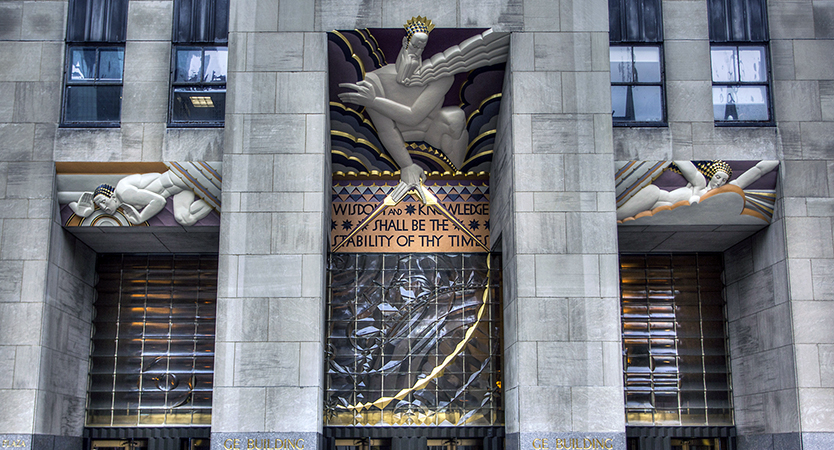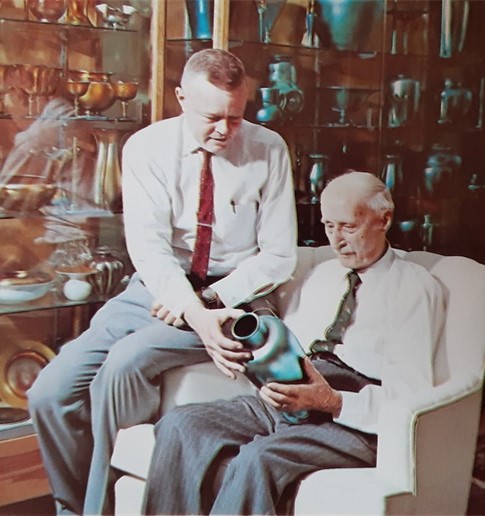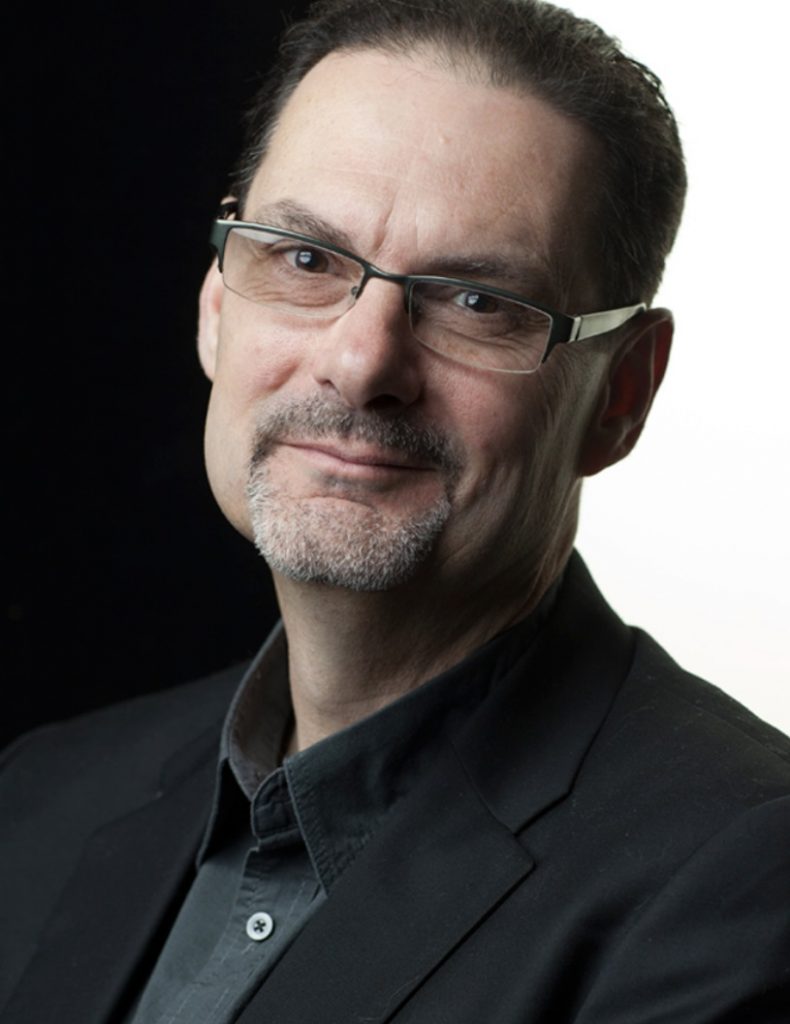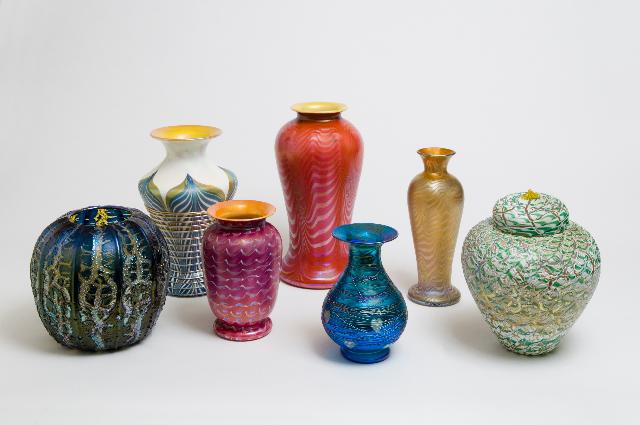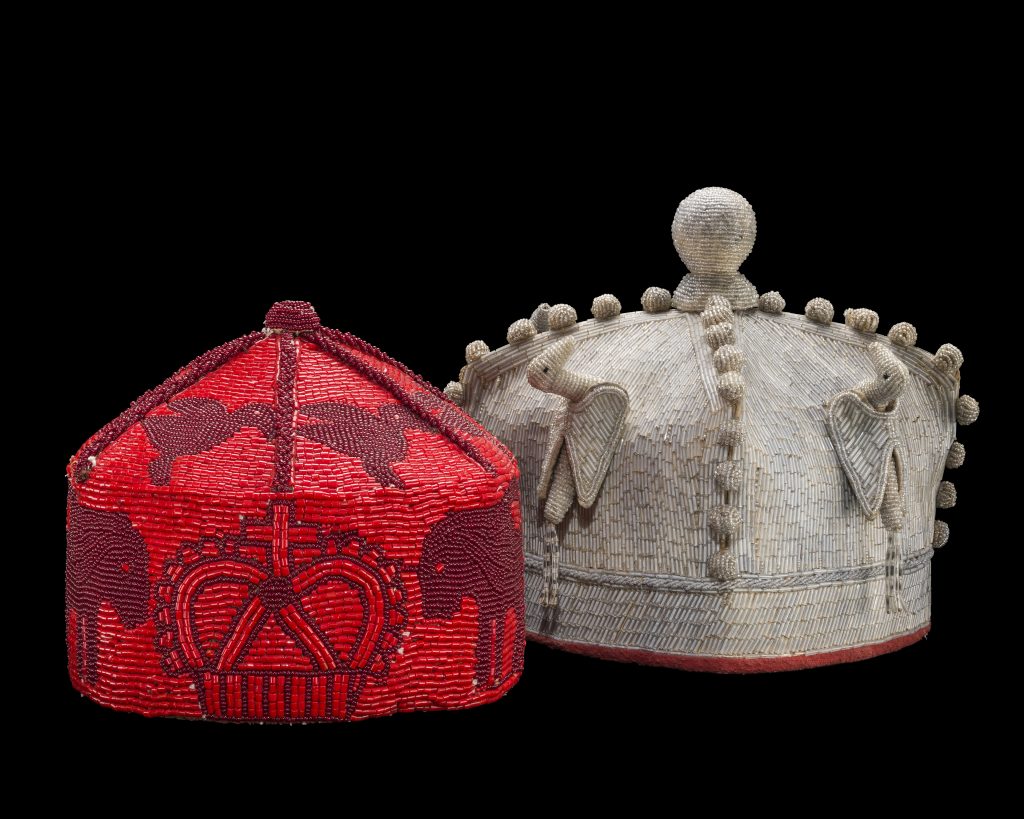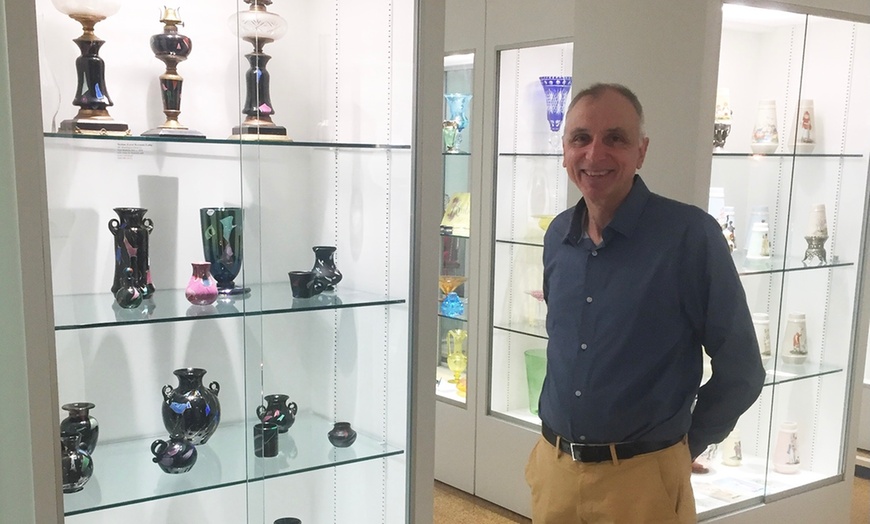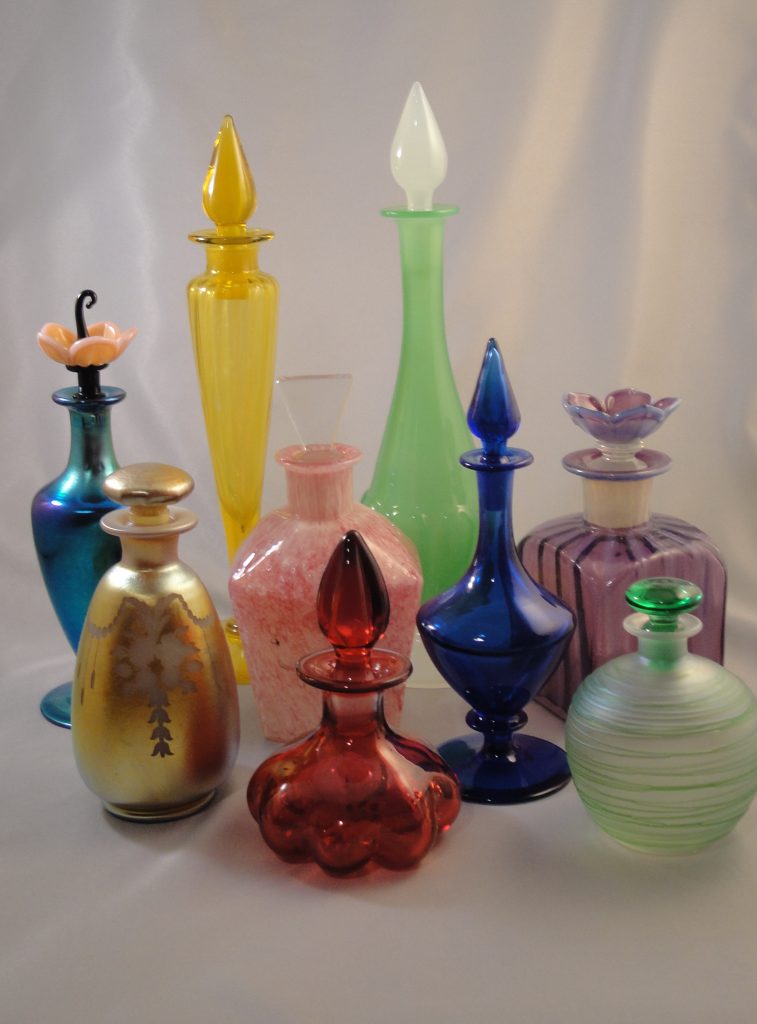2022 Symposium Presentations
2022 Symposium Presentations
Rent a presentation today, 7 days for $10.00
Carder’s Architectural Glass in New York Buildings
During the late 1920s and early 1930s, Frederick Carder’s Steuben Division produced architectural glass for a variety of buildings—usually skyscrapers—for both interior and exterior applications. Architectural glass was used both for its beauty as well as for its functionality. The Frederick Carder Papers at the Rakow Research Library includes correspondence, contracts and costs, design drawings, marketing materials, and catalogs related to Steuben architectural glass. Joe will share the substantial amount of information on the glass at Rockefeller Plaza in New York City that seems to have gone unrecognized by history nearly a century later. This presentation will attempt to remedy that deficiency and shed light on the role that Carder and Steuben played in creating this large-scale work of public art.
Joe Schill is an archivist at the Rakow Research Library, where he began working in June 2019. Much of his job revolves around processing archival collections, creating finding aids, and managing the Museum’s web archiving program. Prior to becoming an archivist, Joe taught high school social studies for ten years. From 2011-2018, he renovated old houses while raising two children with his wife in Ithaca, New York. Joe is a strong believer in lifelong learning, having earned three master’s degrees over the last three decades, including an MSILS from the University at Buffalo (SUNY) in 2019.
Bob and Fred: From Golf to Glass
When Eugene Sullivan introduced young Bob Rockwell to Fred Carder it was on the golf course. During those weekly games, Bob would learn about community issues and about “all the possibilities of glass” from these two glass technology titans. Jenny Monroe will weave together stories of how Rockwell and Carder each came to Corning, grew their businesses, served the community and developed a deep mutual respect. It was this friendship that encouraged Rockwell to begin to collect Carder Steuben in the last few years of Mr. Carder’s life and to amass the huge collection that was given to the community through the Rockwell Museum. The talk will ground Carder and Rockwell in the context of local history and will be of interest to new and experienced collectors.
Jenny Monroe worked alongside Bob Rockwell for 23 years at The Rockwell Museum (1976-99) and organized many of the early Carder exhibits, dinners and Friends of Carder symposia. She and her husband collect Carder shades for their Arts & Crafts home in Corning.
Adventures in Glass Design: What Glass Can Do
Rob Cassetti’s love affair with glass began as a college intern when he first encountered molten glass flowing from the furnace at the Steuben Glass factory. When he was hired by Steuben a decade later, he realized his design training and previous design experience had not prepared him for creating new work at Steuben. Rob discovered, like so many Steuben designers before him, he had to learn on the job through trial and error from the glassmakers on the factory floor. Working side-by-side with glass makers and fellow designers provided a master class in what glass can do. His work at Steuben was an awakening to the power and possibilities of glass as a material. It launched a 30-year global adventure in glass at Steuben, Corning, and the Corning Museum of Glass.
Rob Cassetti joined CMOG in 1999 as manager of education and creative services. He became a director of the Museum in 2001, and was named senior director in 2007 until his retirement in 2020. He was responsible for developing the creative strategy for the Museum in addition to the operation of the Museum’s live glass demonstrations. Prior to joining the Museum however, Cassetti worked for more than 10 years as a glass designer with Steuben Glass. Cassetti holds a BFA from Carnegie Mellon University’s College of Fine Arts. He is the former President of the Board of Trustees of The Museum Association of New York, and a member of the Corning Incorporated architectural advisory committee. Rob continues to serve as a creative strategist for the Museum.
The Last Rival: Durand Art Glass
When the Durand Art Glass Division of the Vineland Flint Glass Works was founded in December 1924 by company owner Victor Durand, it was the last American competitor to Frederick Carder’s Steuben Glass Works. Tiffany Furnaces, Quezal Art Glass and Decorating Company, Union Glass Company, Imperial Glass Company and the Fenton Art Glass Company had either closed their doors or discontinued art glass production. Although Durand was a very small operation and only lasted seven and a half years, it output rivaled many of Steuben’s designs and developed its own distinctive style. This lecture will concentrate on Durand’s production and illustrate the comparisons to Steuben designs. Also explored will be the reasons for the demise of both factories which ended in the same year.
Gay LeCleire Taylor is the former Director/Curator of the Museum of American Glass at Wheaton Arts and Cultural Center (formerly Wheaton Village) in Millville, New Jersey. During her tenure of over thirty-five years at the Museum she organized over thirty exhibitions. She has lectured extensively on a variety of topics and has taught glass conservation and history of glass classes She has experience with identification of glass collections. Gay has served on various boards of collecting associations. She has published numerous articles and written exhibition catalogs.
Past|Present: Expanding the Stories of Glass
Building on the mission of the Corning Museum of Glass, to “inspire people to see glass in a new light,” the Curatorial team of the Museum challenged themselves to see our rich collection in new ways. The result is an exhibition of objects from the permanent collection which tell diverse and evolving stories. They partnered with people across the region and beyond to better understand these objects and their relevance to our lives today.
As Curator of Ancient Glass, Katherine is responsible for areas of the historical collection from the origins of glass until 1250 CE. She curated the exhibition Fire and Vine: The Story of Glass and Wine, currently on view in the Gather Gallery, and is the author of Ancient and Islamic Glass: Selections from the Corning Museum of Glass. Katherine holds a Ph.D. in Classical Art and Archaeology from the University of Michigan, an M.A. in Classical and Near Eastern Studies from the University of Minnesota, and a B.A. in Classical Archaeology from Macalester College.
Treasures from The New Bedford Museum of Glass
Founded in 1993, the New Bedford Museum of Glass is developing an extensive collection of beautiful art glass, including fine examples by Steuben, Tiffany, Durand, Quezal, and New Bedford’s celebrated Mt. Washington and Pairpoint glass factories. Mr. Nelson will present highlights of the collection, and also describe the museum’s new home at the James Arnold Mansion, which served during the 1870s and ’80s as the elegant Victorian residence of William J. Rotch, the president of the Mt. Washington company.
Kirk Nelson has served as Executive Director of The New Bedford Museum of Glass, Inc. since 2006. He previously served as Curator of Glass at The Sandwich Glass Museum in Sandwich MA and Curator of Art and Decorative Arts at The Bennington Museum in Bennington VT. As a museum curator, historian, and scholar Nelson has dedicated his multifaceted career to advancing public appreciation for the artistry and science of glass. Nelson earned a Master of Arts degree and Certificate of Museum Studies from the Winterthur Program in Early American Culture at The Winterthur Museum and the University of Delaware, with a course concentration in American decorative arts and history. Nelson has personally curated numerous exhibitions all around the New England area. He is a frequent lecturer and has published extensively on a wide variety of glass-related topics.
What’s on your Dressing Table
Frederick Carder created hundreds of cologne bottles, powder boxes, bath salt and cold cream jars in an array of shapes, sizes and colors – all for a lady’s vanity table. Most of these items were utilitarian but each of these pieces are a work of art with intricate decorations, color combinations, unusual stoppers, etching and engraving among other highlights. Collectors will be able to better appreciate all the vanity items available and maybe even start a collection of their own!
NOTE: This will be an interactive discussion – attendees are encouraged to bring their favorite vanity item for display and sharing.
Bonnie Salzman is a member of the CSGA as well as the International Perfume Bottle Association and the National American Glass Club. She has written numerous articles about the types of perfumes and colognes that she collects and has spoken many times to groups on these topics. In real life she is Senior Counsel with the Virginia State Corporation Commission practicing in the area of insurance.
